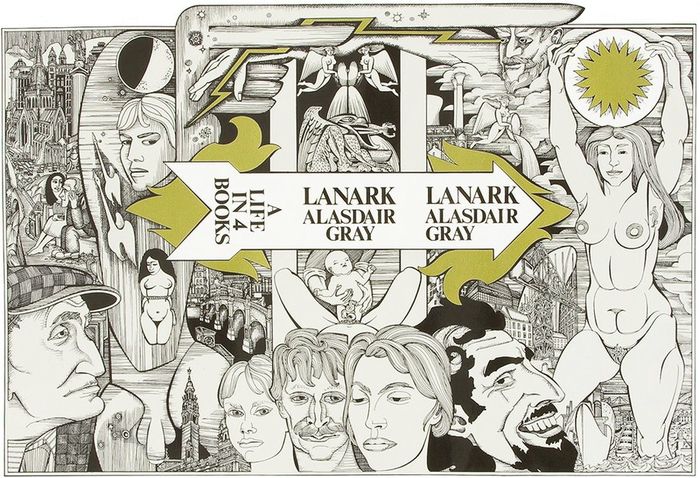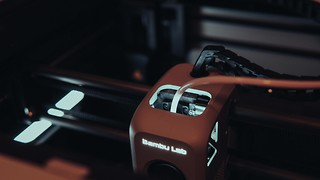The evolving image of Big Brother
On the anniversary of Orwell’s death, Esmee Wright tracks the changing reception of his classic novel 1984 through its cover art
George Orwell died 70 years ago this year. He’s never exactly suffered from a lack of popularity, but in a world of fake news and constant surveillance, his final novel, with its Thought Police, Big Brother, and doublethink has never seemed more relevant. Nineteen Eighty-Four was first published in the year before his death and thus will be out of copyright early next year. This will no doubt be followed by an explosion of retellings and reimaginings for our present day. However, before bracing for the inevitable horror of the capitalist market taking on George Orwell, now seems like a good time to explore the artistic ventures most closely linked with the novel currently: the book covers themselves.
The first edition covers from Secker & Warburg in 1949 and Penguin in 1954 were not exactly the height of imagination - the former a block colour with a word art font, the other the traditional image for Penguin’s ‘six pence novels’. This latter series was once described by Orwell himself as “splendid value for sixpence, so splendid that if other publishers had any sense they would combine against them and suppress them”. Part of the reason for this paucity in price was indeed the simplicity of the orange-white-orange print of the books covers. Although pleasingly uniform, this look did little to inform and inspire the reader about the actual contents of the book at first glance.
By 1962 Penguin was looking to modernise, and so Penguin founder Allen Lane hired Germano Facetti to be the new Art Director. Facetti’s first move was to change the format of the cover, using a design made by Polish Freelancer Romek Marber, which became known as the Marber grid. Shown here with examples from the Penguin Crime series, its simple ruled style meant that title, author and price could all be displayed neatly, with room on the cover for an image inspired by the contents of the book.
Nineteen Eighty-Four was actually the first science-fiction title to be printed in this fashion. The image itself might be rather of its time in its use of collage and colour, but Facetti’s personal history alone makes it a starting image well worth considering. Unknown to most of his colleagues, Facetti had spent his teenage years as a committed anti-fascist in Italy, and was deported to the Austrian concentration camp of Mauthausen in 1943, aged only 17.
When the camp was liberated, he collected photographs left behind by the camp guards and kept them in a box with camp plans and his own drawings, tied shut with scraps of his own camp uniform. This book cover, with its photographed eye staring eerily down a ridged tunnel conveys an air of claustrophobic menace, and bridges the gap between unreal and unnervingly real, much like the novel itself. The eye has become a motif for covers of Nineteen Eighty-Four; it features in some form in the 1983 edition, both editions in 2003 and in 2008 as well as in the 2009 Marion Deuchars version. Staring out at us, it conveys the horror of constant surveillance. The book is, literally, always watching us.
However, not all images used for Nineteen Eighty-Four have been created expressly for the book; four versions of the book published by Penguin feature artwork by artists of varying style and fame. The first was the 1966 edition, which shows the painting The Control Room, Civil Defence Headquarters (1942) by William Roberts. There are certainly elements which give this painting the air of an office in Oceania - the oddly ironed-out appearance lent to the figures by Roberts' cubist style, the boundary maps on the wall with depersonalised numbers in place of names. The painting, like Nineteen Eighty-Four, takes for its subject the ideal of social planning. Unlike the many openly menacing covers, here the bright colours and almost cuddly figures hint at the pleasant lies behind which a totalitarian state might hide its more nefarious aspects.
The 2000 edition also focuses on an office scene; one which is still not outright threatening, but certainly contains elements of distinct unease. Stephen Conroy's Abstract Painting (1992) depicts a man in a grey suit, stood by a phone and three clocks, all showing different times. This scene is disrupted by an ominous shadow, obscuring the man’s face and darkening the cover - a different, but no less effective way to suggest the underlying horror in this aggressively normal world. The 2019 edition of Nineteen Eighty-Four appeared with Self Portrait (1976) by Francis Bacon. Once more the features are obscured but rather than shadow, it is by colour and distortion, hallmarks of Bacon’s technique.
Equally, the Bacon association affects which aspect of the book arrives at the forefront of the reader’s mind. Rather than the monolithic horror of Big Brother, Bacon’s portrait of mental distress evokes the subtler psychological torture of living within such a brutal society; men are not machines here but shattered creatures.
I can only hope - probably in vain - that in future people will feel less of an intense kinship with this 70 year-old novel. Yet even if we achieve such a rosy future, I am certain that the covers of Nineteen Eighty-Four will continue to inspire, and to encourage new and novel readings of the story each time readers encounter it.
 News / Uni offers students £55k in payouts31 October 2025
News / Uni offers students £55k in payouts31 October 2025 News / Uni error forces deeper spending cuts31 October 2025
News / Uni error forces deeper spending cuts31 October 2025 News / Students launch women’s society excluding trans women31 October 2025
News / Students launch women’s society excluding trans women31 October 2025 News / Students allowed to use AI, says new uni guidance31 October 2025
News / Students allowed to use AI, says new uni guidance31 October 2025 News / College rowing captains narrowly vote to exclude trans women31 October 2025
News / College rowing captains narrowly vote to exclude trans women31 October 2025










